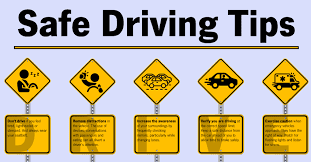Learning to drive a car is an exciting milestone, but it also comes with a significant responsibility to prioritize safety on the road. As a novice driver, it’s crucial to develop good habits and adhere to essential precautions to protect yourself, your passengers, and others on the road. In this article, we’ll discuss key safety tips and precautions that every car driving learner should follow to become a safe and confident driver.
1. Enroll in a Driver Education Program:
Consider enrolling in a certified driver education program to gain comprehensive knowledge of traffic laws, road signs, and safe driving practices.
Driver education courses typically include classroom instruction, behind-the-wheel training, and simulated driving exercises to prepare learners for real-world driving situations.
2. Familiarize Yourself with the Vehicle:
Before getting behind the wheel, take the time to familiarize yourself with the controls, instruments, and features of the vehicle.
Adjust the driver’s seat, mirrors, and steering wheel to ensure proper visibility and comfort while driving.
3. Always Wear Your Seatbelt:
Seatbelt use is one of the most effective ways to prevent injuries and fatalities in car accidents.
Make it a habit to buckle up before starting the engine, and ensure that all passengers in the vehicle are properly restrained.
4. Practice Defensive Driving:
Adopt a defensive driving mindset by staying alert, anticipating potential hazards, and maintaining a safe following distance from other vehicles.
Keep your eyes scanning the road ahead, check your mirrors frequently, and be prepared to react to unexpected situations.
5. Obey Traffic Laws and Signs:
Familiarize yourself with traffic laws, signs, and signals in your area, and always obey posted speed limits, stop signs, yield signs, and traffic signals.
Avoid aggressive driving behaviors such as speeding, tailgating, and weaving in and out of traffic.
6. Avoid Distractions:
Minimize distractions while driving by refraining from using electronic devices, eating, drinking, or engaging in other activities that take your attention away from the road.
If you need to make a phone call or respond to a text message, pull over to a safe location and park the vehicle before using your phone.
7. Practice in Safe Conditions:
Start practicing driving in low-traffic areas such as empty parking lots, residential streets, or quiet rural roads before venturing onto busy highways or urban thoroughfares.
Avoid driving in adverse weather conditions such as heavy rain, snow, or ice until you gain more experience and confidence behind the wheel.
8. Supervised Practice Sessions:
Practice driving under the supervision of a licensed adult driver, preferably a parent, guardian, or experienced mentor.
Take advantage of opportunities to practice various driving maneuvers, such as parking, merging, changing lanes, and navigating intersections, under the guidance of a skilled instructor.
Conclusion:
Becoming a safe and responsible driver requires diligence, patience, and a commitment to following essential precautions and safety tips. By enrolling in a driver education program, familiarizing yourself with the vehicle, wearing your seatbelt, practicing defensive driving, obeying traffic laws, avoiding distractions, practicing in safe conditions, and seeking supervised practice sessions, you can build the necessary skills and confidence to navigate the roads safely. Remember that safe driving is a lifelong journey, and each time you get behind the wheel, prioritize safety for yourself and others on the road.



